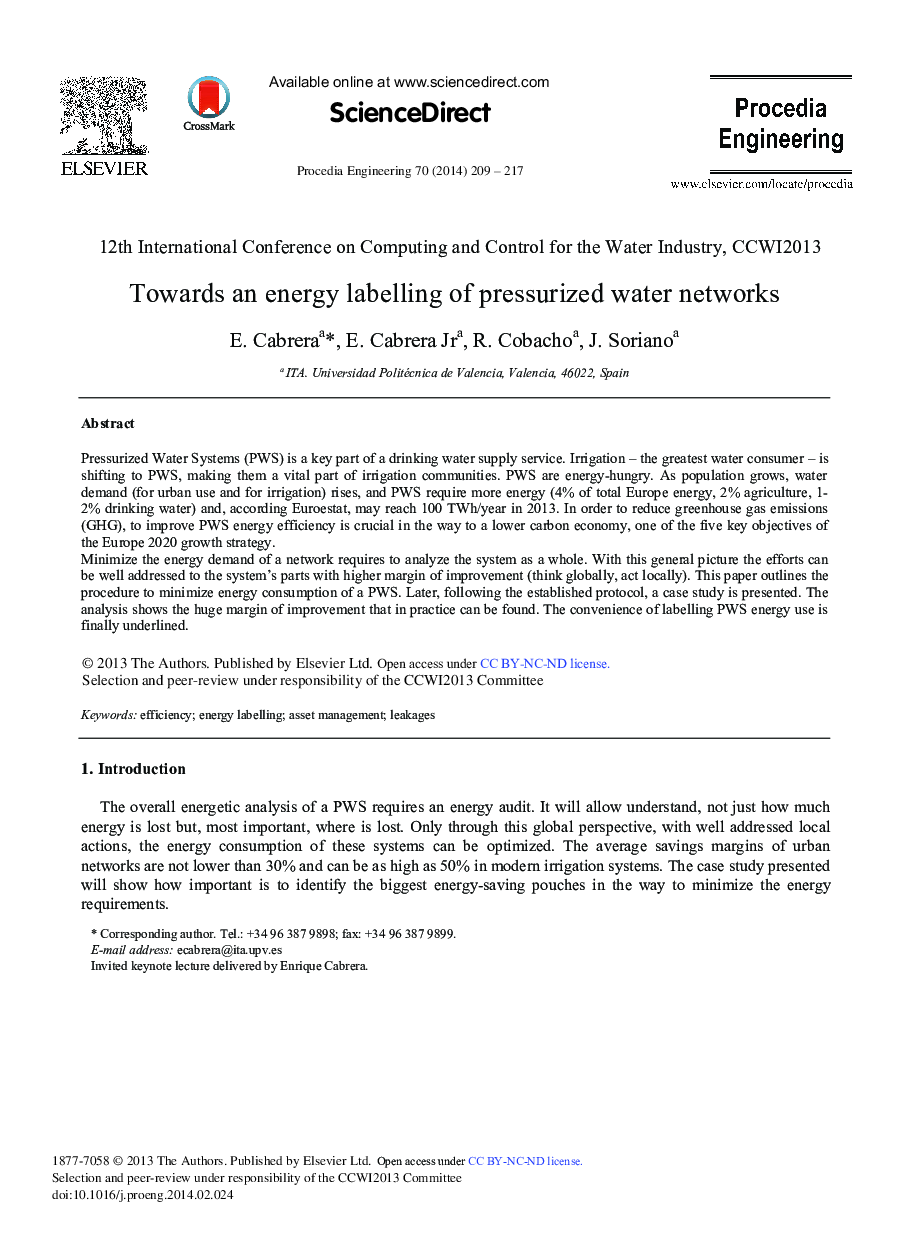| Article ID | Journal | Published Year | Pages | File Type |
|---|---|---|---|---|
| 858346 | Procedia Engineering | 2014 | 9 Pages |
Pressurized Water Systems (PWS) is a key part of a drinking water supply service. Irrigation – the greatest water consumer – is shifting to PWS, making them a vital part of irrigation communities. PWS are energy-hungry. As population grows, water demand (for urban use and for irrigation) rises, and PWS require more energy (4% of total Europe energy, 2% agriculture, 1- 2% drinking water) and, according Euroestat, may reach 100 TWh/year in 2013. In order to reduce greenhouse gas emissions (GHG), to improve PWS energy efficiency is crucial in the way to a lower carbon economy, one of the five key objectives of the Europe 2020 growth strategy.Minimize the energy demand of a network requires to analyze the system as a whole. With this general picture the efforts can be well addressed to the system's parts with higher margin of improvement (think globally, act locally). This paper outlines the procedure to minimize energy consumption of a PWS. Later, following the established protocol, a case study is presented. The analysis shows the huge margin of improvement that in practice can be found. The convenience of labelling PWS energy use is finally underlined.
